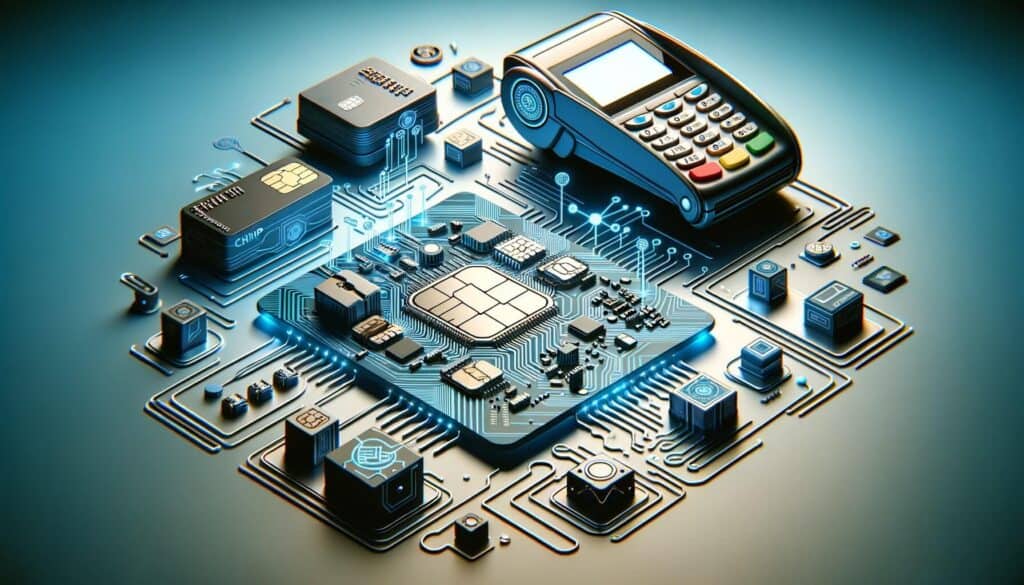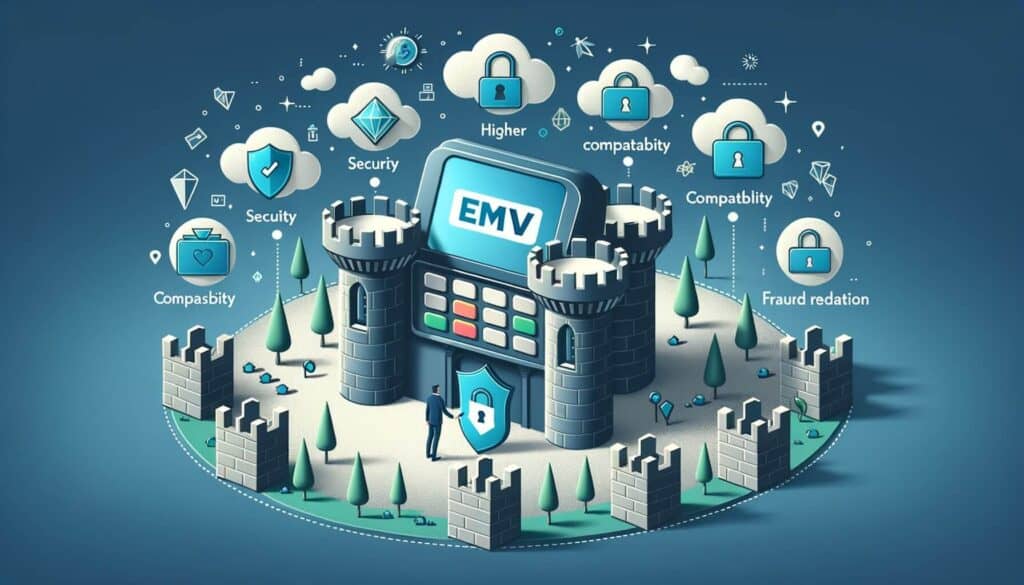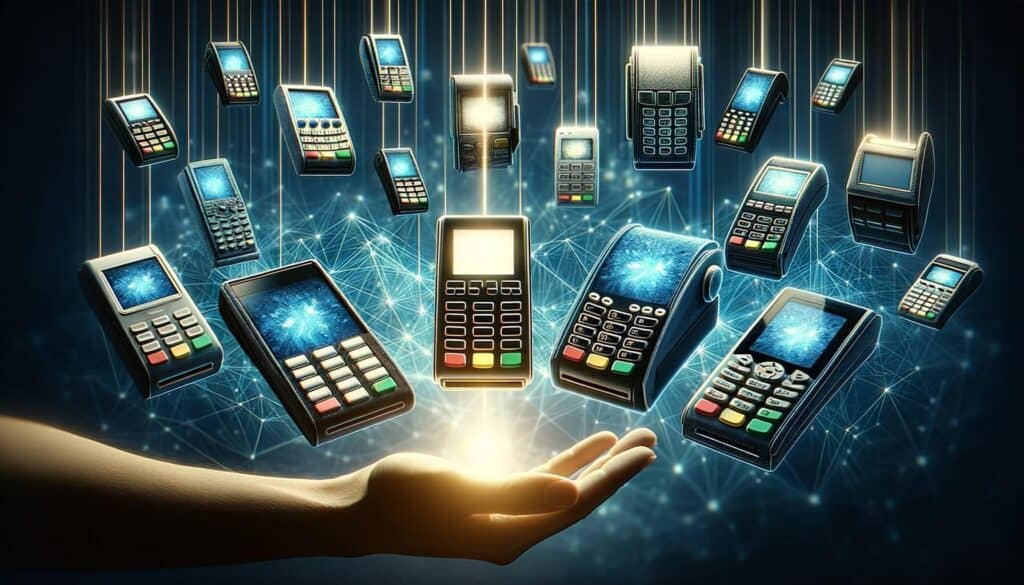
By Amanda Hoglund February 21, 2025
In today’s digital age, the security of financial transactions is of utmost importance. With the rise in credit card fraud and data breaches, businesses need to adopt secure payment processing methods to protect their customers’ sensitive information. One such method is the use of EMV-compliant terminals.
In this article, we will delve into everything you need to know about EMV-compliant terminals, including the technology behind it, its benefits for businesses, how to choose the right terminal, setting it up, best practices for accepting EMV payments, common challenges, troubleshooting tips, and frequently asked questions.
Understanding the EMV Chip Technology

EMV stands for Europay, Mastercard, and Visa, the three companies that developed this technology. The EMV chip is a small microprocessor embedded in credit and debit cards. Unlike traditional magnetic stripe cards, the EMV chip generates a unique transaction code for each payment, making it nearly impossible for fraudsters to clone or counterfeit the card. This technology has been widely adopted globally, with over 9 billion EMV cards in circulation worldwide.
The EMV chip technology offers several advantages over magnetic stripe cards. Firstly, it provides enhanced security by encrypting the cardholder’s data, making it significantly more difficult for hackers to steal sensitive information. Secondly, it reduces the liability for businesses in case of fraudulent transactions.
Prior to the adoption of EMV technology, if a fraudulent transaction occurred using a magnetic stripe card, the liability would fall on the card issuer. However, with EMV-compliant terminals, if a counterfeit card is used for a transaction, the liability shifts to the business that failed to adopt EMV technology.
Benefits of EMV-Compliant Terminals for Businesses

The adoption of EMV-compliant terminals offers numerous benefits for businesses. Firstly, it enhances security and reduces the risk of fraud. By accepting EMV payments, businesses can protect their customers’ sensitive information and reduce the likelihood of data breaches. This not only safeguards the reputation of the business but also instills trust and confidence in customers.
Secondly, EMV-compliant terminals provide businesses with liability protection. As mentioned earlier, in the case of fraudulent transactions, the liability shifts to the business if they have not adopted EMV technology. By using EMV-compliant terminals, businesses can mitigate the risk of financial losses due to fraudulent activities.
Furthermore, accepting EMV payments can improve customer satisfaction. With the increasing prevalence of EMV cards, customers have come to expect businesses to accept these secure payment methods. By offering EMV payments, businesses can cater to the preferences of their customers and provide a seamless and secure payment experience.
How to Choose the Right EMV-Compliant Terminal for Your Business

Choosing the right EMV-compliant terminal for your business is crucial to ensure smooth and secure payment processing. Here are some factors to consider when selecting a terminal:
1. Compatibility: Ensure that the terminal is compatible with your existing point-of-sale (POS) system or payment gateway. It should seamlessly integrate with your current setup to avoid any disruptions in your business operations.
2. Connectivity: Determine the type of connectivity that suits your business needs. EMV-compliant terminals can be connected via Ethernet, Wi-Fi, or cellular networks. Consider factors such as internet availability, speed, and reliability to choose the most suitable connectivity option.
3. Features: Evaluate the features offered by different terminals and choose the ones that align with your business requirements. Some common features include contactless payments, NFC compatibility, receipt printing, and customer-facing displays.
4. Cost: Consider the upfront cost of the terminal as well as any ongoing fees, such as transaction fees or monthly service charges. Compare the costs of different terminals and choose the one that offers the best value for money.
5. Support and Maintenance: Ensure that the terminal provider offers reliable customer support and maintenance services. In case of any issues or technical difficulties, prompt assistance is essential to minimize disruptions to your business operations.
Step-by-Step Guide to Setting Up an EMV-Compliant Terminal

Setting up an EMV-compliant terminal may seem daunting, but with the right guidance, it can be a straightforward process. Here is a step-by-step guide to help you set up your terminal:
1. Choose a terminal: Select an EMV-compliant terminal that meets your business requirements, considering factors such as compatibility, connectivity, features, cost, and support.
2. Obtain necessary certifications: Ensure that your chosen terminal is certified by the relevant payment networks, such as Visa, Mastercard, or American Express. This certification ensures that the terminal meets the required security standards.
3. Install the terminal: Follow the manufacturer’s instructions to install the terminal. This typically involves connecting the terminal to a power source and the internet, either through Ethernet, Wi-Fi, or cellular networks.
4. Configure the terminal: Set up the terminal by entering the necessary information, such as your business name, address, and tax identification number. Configure the terminal settings according to your preferences, such as language, receipt options, and tip prompts.
5. Test the terminal: Before accepting live transactions, perform test transactions to ensure that the terminal is functioning correctly. Test different payment methods, such as chip cards, contactless payments, and manual entry, to verify that all payment options are working as expected.
6. Train your staff: Provide comprehensive training to your staff on how to operate the EMV-compliant terminal. Familiarize them with the different payment methods, troubleshooting techniques, and best practices for accepting EMV payments.
7. Update your POS system: If necessary, update your point-of-sale system or payment gateway to ensure compatibility with the EMV-compliant terminal. This may involve installing software updates or integrating the terminal with your existing system.
8. Communicate with customers: Inform your customers about the new EMV-compliant terminal and the benefits it offers. Display signage or provide information on your website to educate customers about the enhanced security measures and the ease of using EMV payments.
Best Practices for Accepting EMV Payments
Accepting EMV payments requires businesses to follow certain best practices to ensure a smooth and secure payment experience. Here are some best practices to consider:
1. Educate your staff: Train your staff on the proper procedures for accepting EMV payments. They should be familiar with the different payment methods, such as chip cards, contactless payments, and mobile wallets, and know how to handle any issues that may arise during the payment process.
2. Encourage chip card usage: Promote the use of chip cards among your customers. Educate them about the enhanced security features of chip cards and the reduced risk of fraud compared to magnetic stripe cards. Display signage or offer incentives to encourage customers to use their chip cards for payments.
3. Verify customer signatures: For transactions that require a signature, ensure that your staff verifies the signature on the receipt against the one on the back of the card. This helps prevent fraudulent transactions and protects your business from chargebacks.
4. Keep terminals up to date: Regularly update the software and firmware of your EMV-compliant terminals to ensure they are equipped with the latest security features. This helps protect against emerging threats and vulnerabilities.
5. Secure your terminals: Implement physical security measures to protect your terminals from theft or tampering. Secure the terminals to the countertop or use anti-tamper devices to prevent unauthorized access to the terminal or its components.
6. Monitor transactions: Regularly review transaction logs and reports to identify any suspicious or fraudulent activities. Set up alerts for unusual transaction patterns or high-value transactions to detect potential fraud in real-time.
7. Stay informed about industry updates: Keep yourself updated with the latest developments in the payment industry, including new security standards, regulations, and best practices. Subscribe to industry newsletters, attend conferences, or join professional associations to stay informed and adapt your payment processes accordingly.
Common Challenges and Troubleshooting Tips for EMV Terminals
While EMV-compliant terminals offer enhanced security, they can sometimes pose challenges for businesses. Here are some common challenges and troubleshooting tips to help you overcome them:
1. Slow transaction times: EMV transactions can take longer than magnetic stripe transactions due to the additional security measures involved. To minimize delays, ensure that your terminal is up to date with the latest software and firmware updates. Additionally, educate your staff on efficient transaction processing techniques, such as prompting customers to insert their card before the transaction amount is entered.
2. Card not recognized: If a card is not recognized by the terminal, ensure that the card is inserted correctly with the chip facing up. If the issue persists, check for any visible damage or dirt on the chip and clean it gently with a soft cloth. If the problem persists, the card may be faulty, and the customer should contact their card issuer for a replacement.
3. Declined transactions: If a transaction is declined, instruct your staff to follow the standard troubleshooting steps, such as asking the customer to try again, verifying that the card is not expired, and checking for sufficient funds in the customer’s account. If the issue persists, advise the customer to contact their card issuer for further assistance.
4. Terminal errors: In case of terminal errors or malfunctions, restart the terminal and try again. If the problem persists, contact your terminal provider’s customer support for assistance. They may be able to troubleshoot the issue remotely or provide guidance on resolving the problem.
5. Customer confusion: Some customers may be unfamiliar with the EMV payment process, leading to confusion or frustration. Train your staff to guide customers through the payment process, explaining the steps involved and answering any questions they may have. Display clear instructions or signage near the terminal to help customers understand the process.
Frequently Asked Questions about EMV-Compliant Terminals
Q1. What is the difference between EMV and magnetic stripe cards?
A1. EMV cards have a microprocessor chip embedded in them, whereas magnetic stripe cards have a magnetic stripe containing the cardholder’s information. EMV cards offer enhanced security and are more difficult to clone or counterfeit compared to magnetic stripe cards.
Q2. Are EMV-compliant terminals compatible with all types of payment cards?
A2. EMV-compliant terminals can accept all types of payment cards, including chip cards, contactless payments, and mobile wallets. However, it is essential to ensure that your terminal is certified by the relevant payment networks to accept these payment methods.
Q3. Can I still accept magnetic stripe cards with an EMV-compliant terminal?
A3. Yes, EMV-compliant terminals are designed to accept both chip cards and magnetic stripe cards. However, it is recommended to encourage customers to use chip cards whenever possible to benefit from the enhanced security features.
Q4. How long does it take to set up an EMV-compliant terminal?
A4. The time required to set up an EMV-compliant terminal depends on various factors, such as the complexity of your existing system, the terminal provider’s support, and the training required for your staff. On average, the setup process can take a few hours to a few days.
Q5. Can I use my existing point-of-sale system with an EMV-compliant terminal?
A5. In most cases, EMV-compliant terminals can be integrated with existing point-of-sale systems or payment gateways. However, it is essential to ensure compatibility between the terminal and your existing system to avoid any disruptions in your business operations.
Conclusion
EMV-compliant terminals have revolutionized the payment industry by providing enhanced security and reducing the risk of fraud. By understanding the technology behind EMV chips, businesses can make informed decisions about adopting this secure payment method. Choosing the right EMV-compliant terminal, setting it up correctly, and following best practices for accepting EMV payments are crucial for a seamless and secure payment experience.
While there may be challenges along the way, businesses can overcome them by staying informed, training their staff, and seeking assistance from terminal providers when needed. By embracing EMV technology, businesses can protect their customers’ sensitive information, reduce liability, and enhance customer satisfaction in an increasingly digital world.